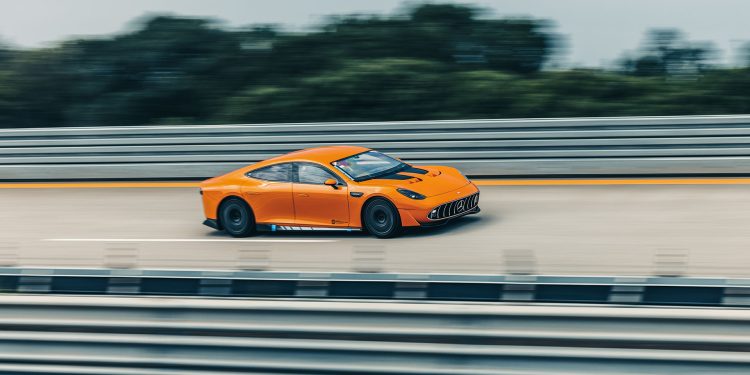Mercedes-AMG GT XX sets record number of electric records
The Mercedes-AMG hypersaloon GT XX concept car completed 40,000km in less than eight days, rewriting the electric car record books.

The orange super-saloon, a pair of them actually, lapped the high-speed banking of the Nardo circuit in southern Italy 3177 times. That brought up the official circumference of the equator. So they have driven around the world in seven days, 13 hours, 24 minutes and seven seconds.
For more info on the GT XX see here.
It’s a record that Mercedes-AMG CEO Michael Schiebe says was inspired by Around The World In 80 Days. “Except we decided to shorten it to eight,” he said.

The car set 26 world records in the process. And it involved ambient temperatures that exceeded 35deg C during the day, along with periods of torrential rain.
The new 24-hour electric car distance record is the most high-profile of all: 5446kms. That’s 38 per cent further than the Xpeng P7 managed earlier this month.
The records continued to tumble, the GT XX establishing additional benchmarks for 48, 72, 96, 120, 144 and 168 hours.
And it also posted new records at 2000, 5000, 10,000, 15,000, 20,000 and 25,000 miles, amongst others.

Mercedes-AMG didn’t just employ one GT XX for the task; it ran two in tandem, each with its own dedicated team of engineers, drivers and logistics support. Schiebe said: “We had team blue and team green. The two pushed each other. It got so intense early on that we had to tell them to slow down.”
Nardo, by the by, is a 12.48km circular high-speed test track set in the heel of Italy’s boot. It was once a Fiat proving ground but today is owned by Porsche and run as a global engineering centre open to paying customers.
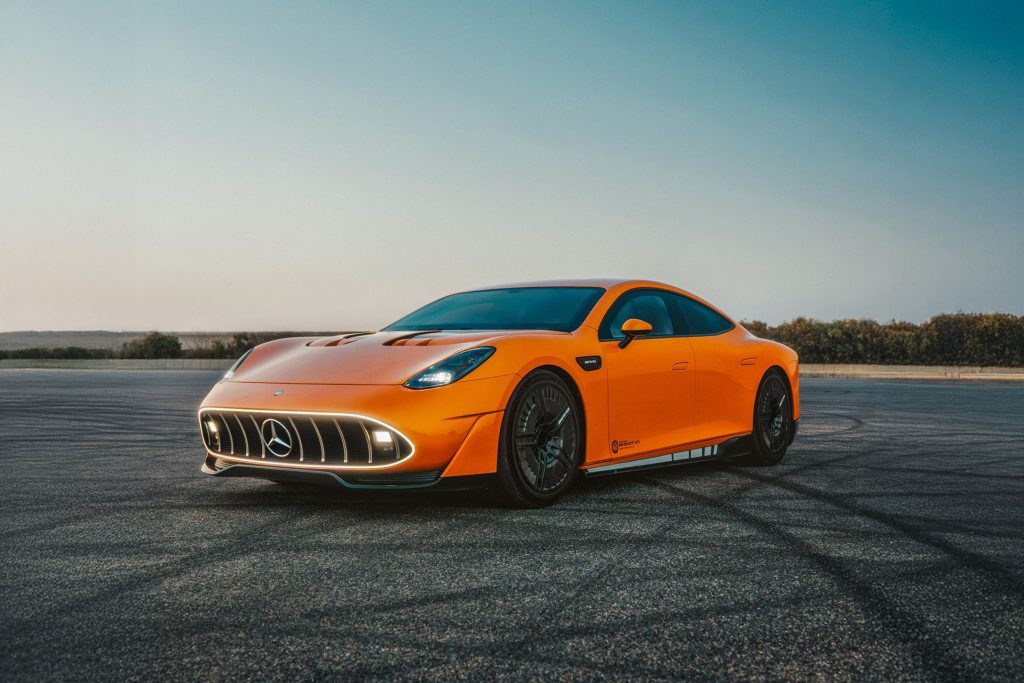
Mercedes-Benz has been here before. In 2024, it set a new electric car 24-hour hour distance record with the third-generation Mercedes CLA saloon (3696km).
What it all means for the GT 4-Door production supercar
The GT XX uses Mercedes-AMG’s all-new AMG.EA electric car architecture. It previews the next GT 4-Door Coupé, launching before the end of next year.
That car will inherit the GT XX’s drivetrain: a triple-motor layout with two axial flux motors at the rear and a smaller axial flux booster motor sitting up front. In total, they deliver a combined 1000kW.

Power flows from an oil-immersed cylindrical-cell battery pack, which can accept charge rates as high as 850–900kW. It is possible to add 400km of charge in less than five minutes, according to Mercedes. With such rapid charging, the stops during the record attempt were between two and four minutes.
During the record attempt, the cars averaged a lick under 300km/h for eight days straight, excluding charging. A team of 17 drivers, including F1’s George Russell, rotated in eight-hour shifts, supported by over 130 engineers and logistics staff on-site at Nardo. Some 46 tyre changes were made.
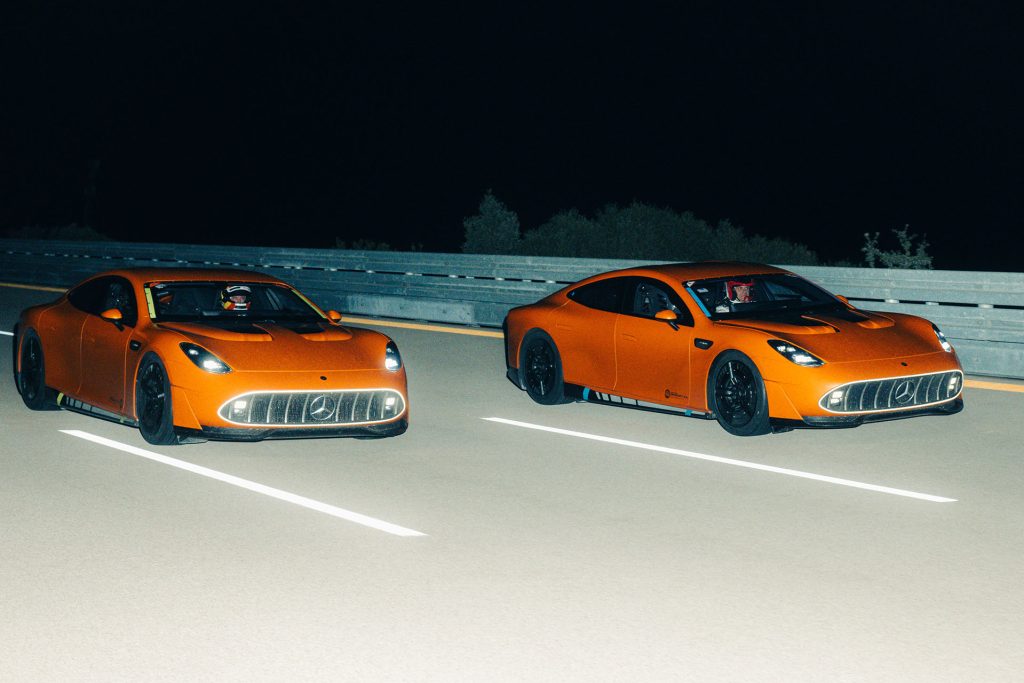
Why the 297km/h average? Schiebe explained: “It’s the sweet spot, the point we calculated we could achieve the best possible trade-off between outright speed and aerodynamic drag.”
Because of the venturi effect within the underbody, the entire record attempt was run without the need to deploy the GT XX’s rear spoiler. The GT XX Cd figure is 0.19, aiding efficiency.
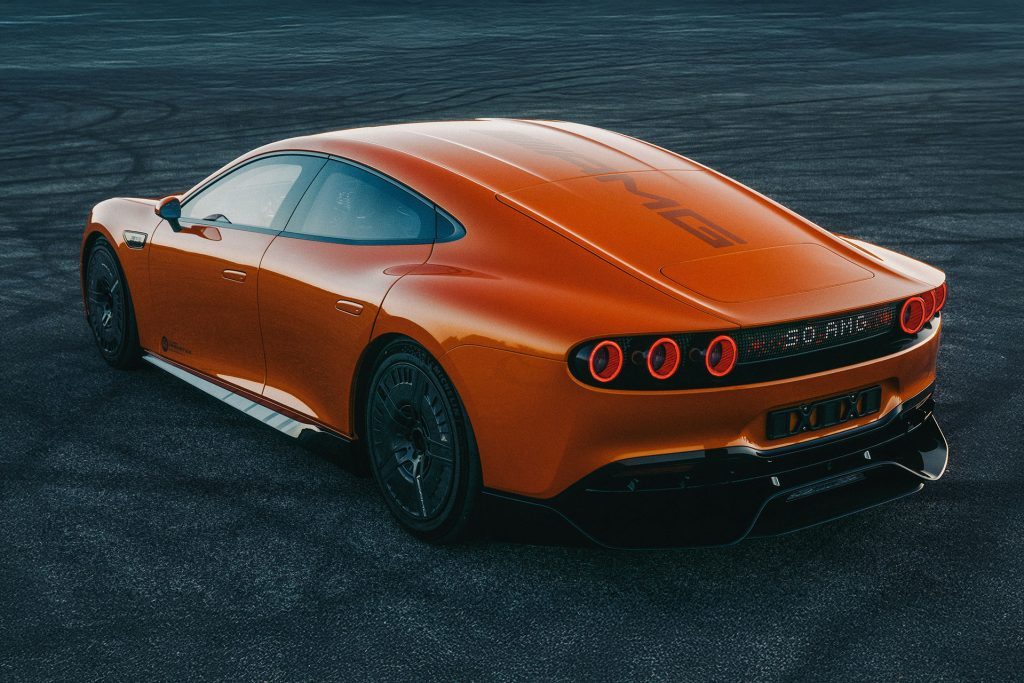
Its active wheels, which house five separate panels that can open to increase air flow, remained closed during on track running to ensure the lowest possible drag. They opened only while charging to dissipate heat.
The GT XX coasts without any direct power for almost a mile on the cooldown, a procedure used for every charging stop during the record run.
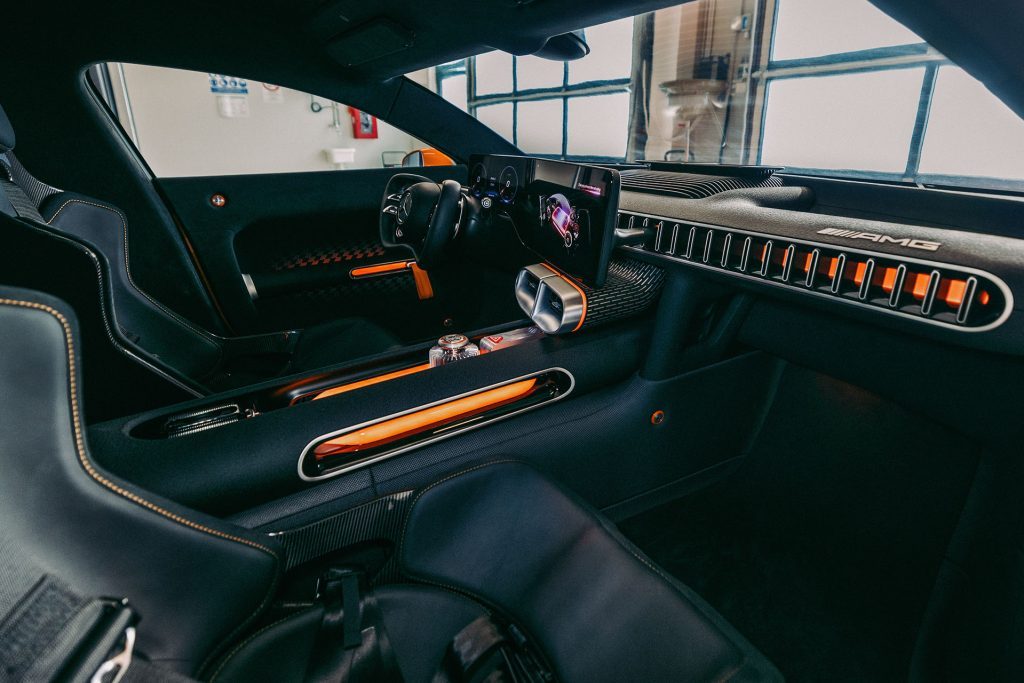
The Mercedes-AMG’s record run with the GT XX wasn’t just about setting records. As Autocar UK commented, it was about redefining the upper limits of what integrated electric car performance can be. Rather than chasing records, it created the rulebook on how to break them.


